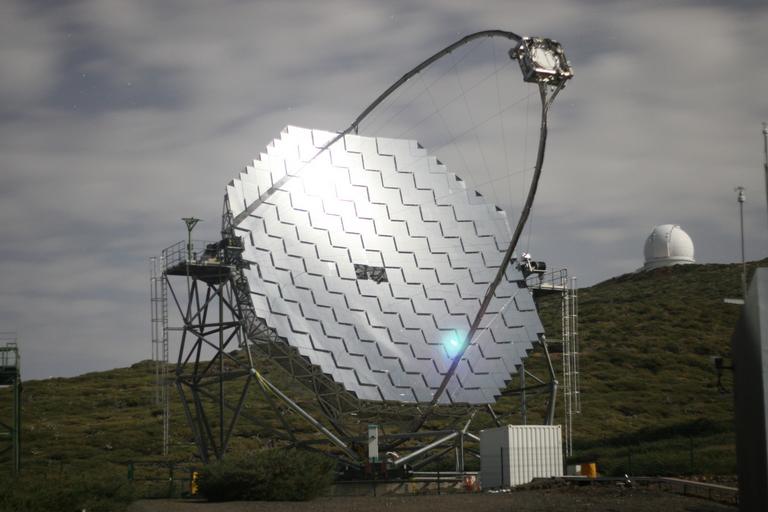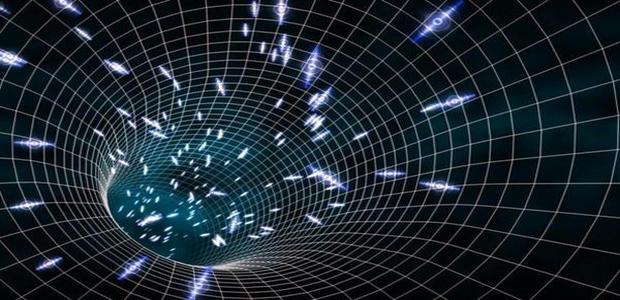We live in an invisible landscape: a landscape that, although we cannot perceive it directly, determines everything that we see and do. Every object there is, from a planet orbiting the sun to a rocket coasting to the moon or a pencil dropped carelessly on the floor, follows its imperceptible contours. We battle against them each time we labour up a hill or staircase. This is the landscape of space-time: the underlying fabric of the physical universe, perhaps of reality itself. Although we don’t see its ups and downs, we feel them as the force we call gravity.
Developed by the physicist Hermann Minkowski in the 20th century, and used by Albert Einstein in his general theory of relativity, space-time has become one of the most powerful concepts in all of physics. There is just one nagging problem: no one knows what it is. Einstein envisaged space- time as a perfectly smooth surface warped by the mass of stars, planets and galaxies to produce gravity. But signals from a variety of celestial objects are hinting at something different. If the observations are confirmed – and they are controversial – they suggest that the landscape of reality is altogether more rugged than Einstein thought. That would mean his isn’t the last word on space-time or gravity, and would change our perception of the universe fundamentally.
Before Einstein, space and time were thought to be separate properties of the universe. For Isaac Newton, they were a rigid framework of creation, and perhaps even some sort of embodiment of God – a “sensorium” through which He viewed the world – with gravity and movement the Almighty’s will made manifest. For many, this strayed too far into the realms of maverick theology, and Newton’s religious interpretations were soon sidelined. But few questioned the underlying science. Only in the mid-19th century did it become clear that Newton’s dynamics couldn’t explain the subtleties of Mercury’s orbital motion around the sun.
Einstein’s relativity could, but only by melding space and time into one mathematically indistinguishable whole, in which what happened to one also affected the other: the space-time continuum. But although the mathematics of relativity describes space-time’s properties very well, it is silent on its underlying nature. We are left to scratch around for observational clues. Everything in the universe, from the largest galaxy to the smallest particle, the dullest radio wave to the brightest ray of light, is immersed in space-time and so presumably must interact with it in some way. The question becomes whether those interactions imprint any signature that we might measure and interpret, and so see the true physical guise of space-time. “This is a beautiful question, and we are at the beginning of answering it,” says Giovanni Amelino-Camelia of the La Sapienza University of Rome in Italy.
In 2005, we seemed to have glimpsed an answer. MAGIC – the Major Atmospheric Gamma-ray Imaging Cherenkov telescope – is a series of giant receivers on La Palma in Spain’s Canary Islands tuned to detect cosmic light of the highest energy: gamma rays. On the night of 30 June, the array detected a burst of gamma radiation from a giant black hole at the heart of Markarian 501, a galaxy some 500 million light years away. This wasn’t so unexpected. Our theories predict that every time something falls into such a black hole, a flare of radiation will be given off. But those large enough to be caught by an earthbound telescope, even a mighty receiver like MAGIC, are few and far between, and the Markarian flare was pretty much the first of its type to be seen.

And detailed analysis revealed something decidedly unusual about the burst: the lower- energy radiation seemed to have arrived up to 4 minutes before the higher-energy radiation. This is a big no-no if space-time behaves according to Einstein’s relativity. In relativity’s smooth space-time, all light travels at the same speed regardless of its energy. But the effect was entirely compatible with other, rival theories that attempt to characterise space-time in terms of quantum mechanics – the theory entirely separate to, and incompatible with, general relativity that explains how everything besides gravity works. In quantum theory, nothing is static or certain. Particles and energy can fluctuate and pop in and out of existence on the briefest of timescales.
Many theories of quantum gravity – the yearned-for “theories of everything” that will unify our descriptions of space-time and gravity with quantum mechanics – suggest something similar is true of space-time: instead of a smooth continuum, it is a turbulent quantum foam with no clearly defined surface. Einstein’s undulating landscape becomes more like a choppy seascape through which particles and radiation must fight their way. Lower-energy light with its longer wavelengths would be akin to an ocean liner, gliding through the foamy quantum sea largely undisturbed. Light of higher energy and shorter wavelengths, on the other hand, would be more like a small dinghy battling through the waves.
-end-


































